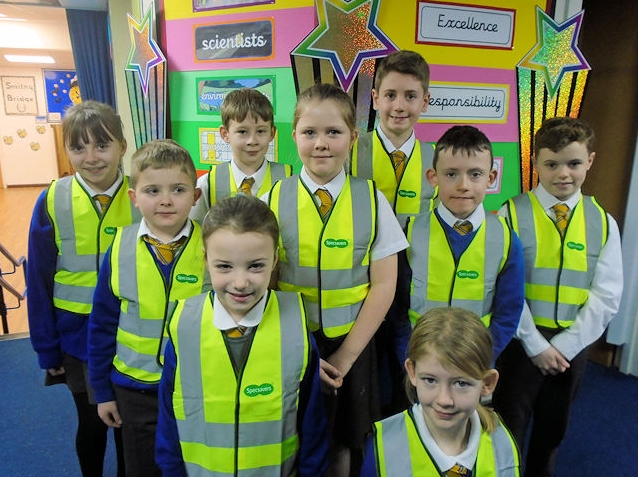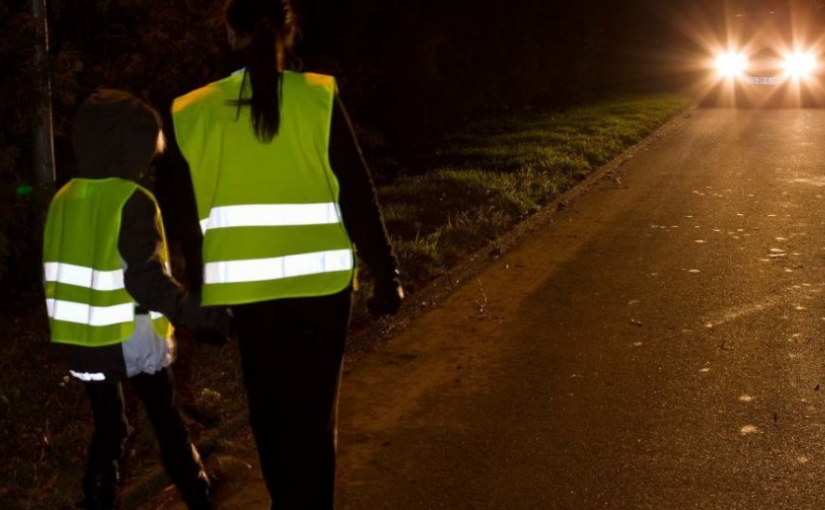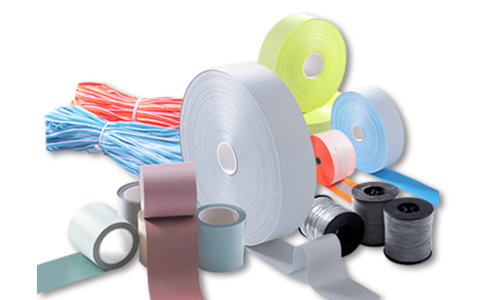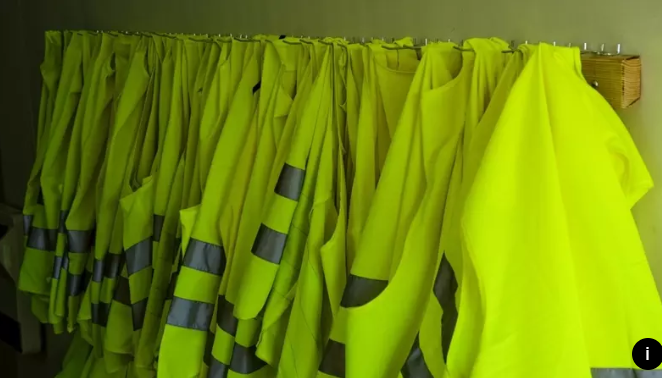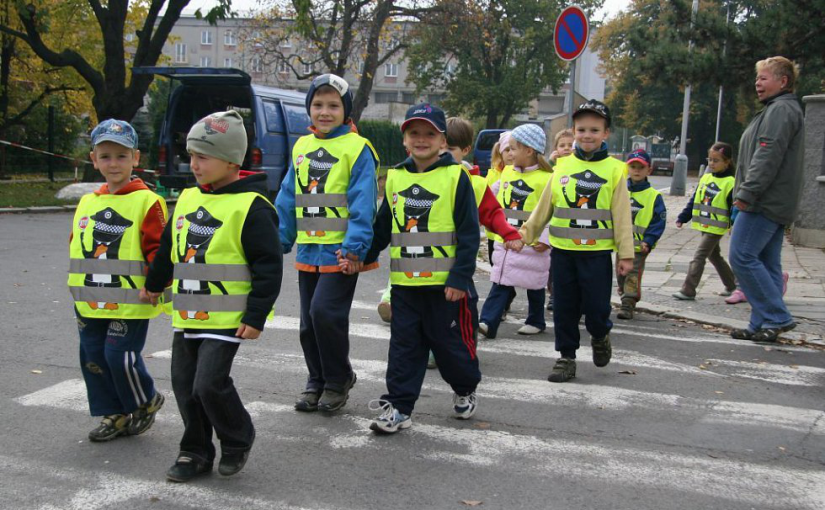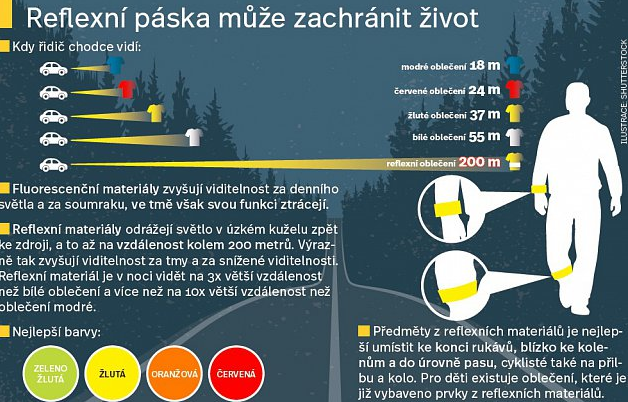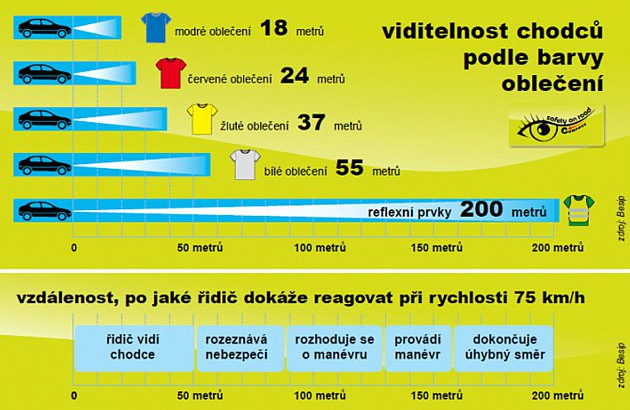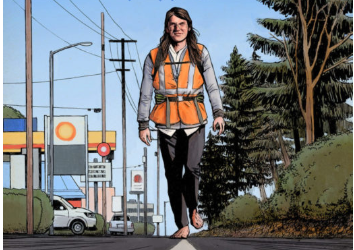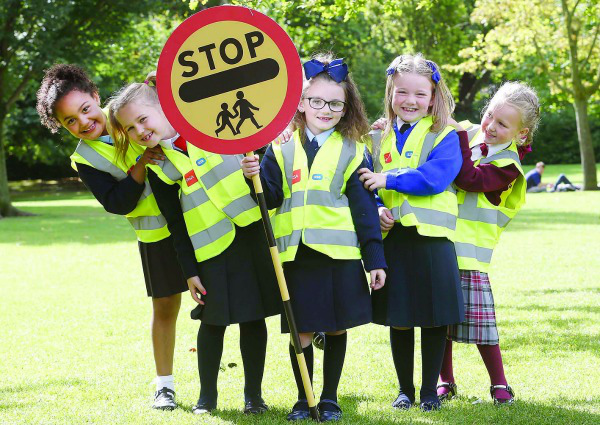The early arrival of darkness combined with drizzle, rain or even fog is not a very pleasant experience behind the wheel. Also, an unlit pedestrian or cyclist in a place where it cannot be expected is suddenly turned into real trouble. Many pedestrians risk their lives only for convenience.
There are serious road accidents every day on the roads. Many of them are caused by poor visibility. In low visibility, they are the most vulnerable pedestrians. Drivers who hurt pedestrians or cyclists agree that they have not seen him at all or too late. Cars and motorcycles, as well as cyclists, must shine, pedestrians are not required to do so. For greater safety, pedestrians should use primarily reflective materials, which make them visible well in advance and others can respond to them in time.
Abroad, reflective elements have saved many lives
Foreign experience shows that reflective elements can reduce pedestrian participation in a fatal accident by up to ten times in poor visibility. In other words, 10% of pedestrians would have a chance to survive, and this percentage is even higher for cyclists – up to 30% of cyclists could live if they were sufficiently visible. That is why pedestrians and cyclists must use reflective vests or other reflective elements that increase road safety.
A series of tests have shown that if a person wearing dark, such as blue clothes is on the road, the driver can record it at a distance of 18 meters. It is better, for example, with the yellow color of the clothes, when the pedestrian is recorded at a distance of 37 meters, in white the driver can see it at 55 meters. But even this distance is not sufficient at night to safely avoid pedestrians. Pedestrians should therefore always have an element on their clothing that would make them more visible. For example, fluorescent materials are available – they increase visibility in daylight and dusk but lose their function in the dark. The most commonly used colors are bright yellow, green and orange. It is preferable to use reflective materials – they reflect light in a narrow cone to the source, up to a distance of about 200 meters. They significantly increase visibility in the dark and in reduced visibility. Reflective material is visible at night 3 times greater than white clothing and more than 10 times greater than blue clothing.
It is best to place objects made of reflective materials at the end of the sleeves, close to the knees and at the waist level (cyclists also wear helmets and bikes, for example). Children can then get clothes that are already equipped with elements of reflective materials, as well as already equipped school bags. When the driver does not see, nothing can be done.
At a speed of 75 km / h, the driver needs at least 1.5 seconds to realize the danger and react accordingly – in that time he has traveled 31 meters. And before he starts his evasive maneuver, he walks more than 150 meters away from seeing a pedestrian. Then he needs more time to complete the maneuver and to cover more meters. For this quite simple task, which happens on the roads countless daily, the driver needs about 200 meters. And at such a distance, a pedestrian can only see if he is wearing reflective accessories.
This is a basic safety requirement that a pedestrian should meet. On the other hand, the driver should also follow a simple rule of thumb – driving only fast enough to stop the vehicle at a distance it can see. We should keep in mind that at a speed of 100 km our car will travel 28 meters per second. Often the driver reacts for up to 2.5 seconds and then only brakes for 40 meters. This mathematical excursion is needed because we should realize that the afterglow of the dipped beam of a car is about sixty meters. This means that when the dipped beam is on, we can drive at a maximum of just over seventy kilometers per hour. At a speed of ninety kilometers, we have to count with a stopping distance of over seventy meters. Slightly more favorable is the situation where we can have the main beam on. Then we register pedestrians about 100 meters. If we pass by an oncoming vehicle in the dark and therefore switch from high beam to dipped beam, remember that the distance we are seeing is greatly reduced and the driving speed must be reduced accordingly. If it is not possible to illuminate the driving beam when driving, for example, we can use the beam of the vehicle ahead. It shows us what to expect on the road. We should never look into the lights of oncoming cars that can dazzle us. We follow the space on the right shoulder. By briefly flashing through the high beams, we can “touch” the way ahead. Without dazzling oncoming traffic, we can easily detect an obstacle in the dark.
Cyclists are obliged to have their bicycles properly equipped according to regulations. In poor visibility, the wheel shall be equipped with a headlamp illuminating the white front light and a steady or flashing red light at the rear. It also includes reflectors of the corresponding colors – white reflector at the front, red at the rear and orange on the pedals and the spokes. To increase safety, it is advisable to complete everything with at least reflective stripes on shoes and clothing, helmet and possibly on your bike.
How to increase visibility (pedestrians and cyclists)
Use reflective and fluorescent materials and combine them to see well in both light and dark. Reflective items are best placed at the end of the sleeves, close to the knees and at waist level (cyclists also wear helmets and bikes). Get clothes, school bags, and accessories with reflective and fluorescent safety features for your children. Reflective and fluorescent objects are not expensive. Various pendants, patches, iron-on elements, stickers, hand straps, etc. Not only cars are required to light up, but the cyclist is also required to have a headlight with white light illuminating forwards and a red or flashing red light. A flashing tail light can be seen up to 1000 meters. The driver can see the cyclist in time and adjust the speed to the situation.
